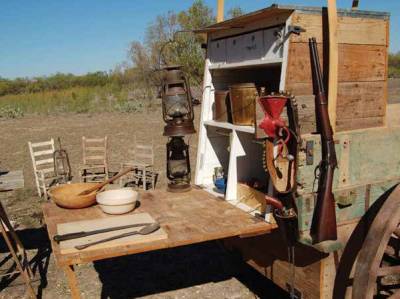Image Description for Medium Images
Most images you will find in EPUBs fit into this medium complexity category.
What you write in the Alt-text description will depend on the information provided in the surrounding paragraphs. You may find that the image is already described in the text. You don't have to describe it again in full, but add some details that are not given to describe the image avoiding repetition.
Know your audience, and scan the surrounding text to understand the context in which the image is being presented in the book. This will help you choose the appropriate language, and guide you to how detailed you need to be in your description.
If there is a person, place, or object that is named in the text, then use it in your description. Do not name characters in images before they are introduced in the text.
Remember context is key.
The first step is to scan the paragraph above and below the image, and read the caption if it has been provided. If the image is described in surrounding text, you still need to describe the image. Sometimes, a character or place is described early in the text, if this is the case you do not need to re-describe it, only refer to it by the name given in the story. This can happen a lot in Memoirs and Illustrated Children's Books.
Give a brief overview of the image to support the description in the surrounding text without repeating what is already described. If there are details in the image that are not mentioned in the surrounding text you can add them to your description if they are useful to your audience.
If the image is not described in surrounding text, simply apply the basic rules of Alt-text description.
- Write descriptions based on context
- Write descriptions with a clear structure
- Aim for conciseness
- Use present tense / action verbs
- Be objective
- Do not censor
We want to keep the audience in mind and aim to be concise, objective and use plan language in present active tense.
The following examples are from the same book: The Canadian Cowboy Cookbook. One image is not described in the surrounding text, the other is described in the surrounding text.
The first step is to scan the paragraph above and below the image, and read the caption if it has been provided.
If the image is not described in surrounding text, simply apply the basic rules of Alt- text description.
Not Described
After I did a quick scan of the surrounding text I noted that this image is NOT described in the text, but it is at the beginning of the section of this book about Chuckwagons. I am looking at the context here for this image. I also note that this book is a collection of recipes and the history of Canadian Cowboys. I need to take this into consideration when describing this image.
We want to keep the audience in mind and aim to be concise, objective and use plan language in present active tense.
The following Alt-text described the image given the context:
Alt-text: An elderly cowboy drives a chuckwagon through a wide and shallow river. The wagon has an open top and carries a large wooden crate in the back. Two dark coloured mules pull the wagon forward through the river.
Described
If the image is described in surrounding text, you still need to describe the image.
Give a brief overview of the image to support the description in the surrounding text without repeating what is already described. If there are details in the image that are not mentioned in the surrounding text you can add them to your description if they are useful to your audience.
Alt-text: Open mess box set up for a meal.
The image is described in detail in the surrounding text, so it only requires a simple description.
20 minutes. The average editing time for a Medium Image is 10 minutes

